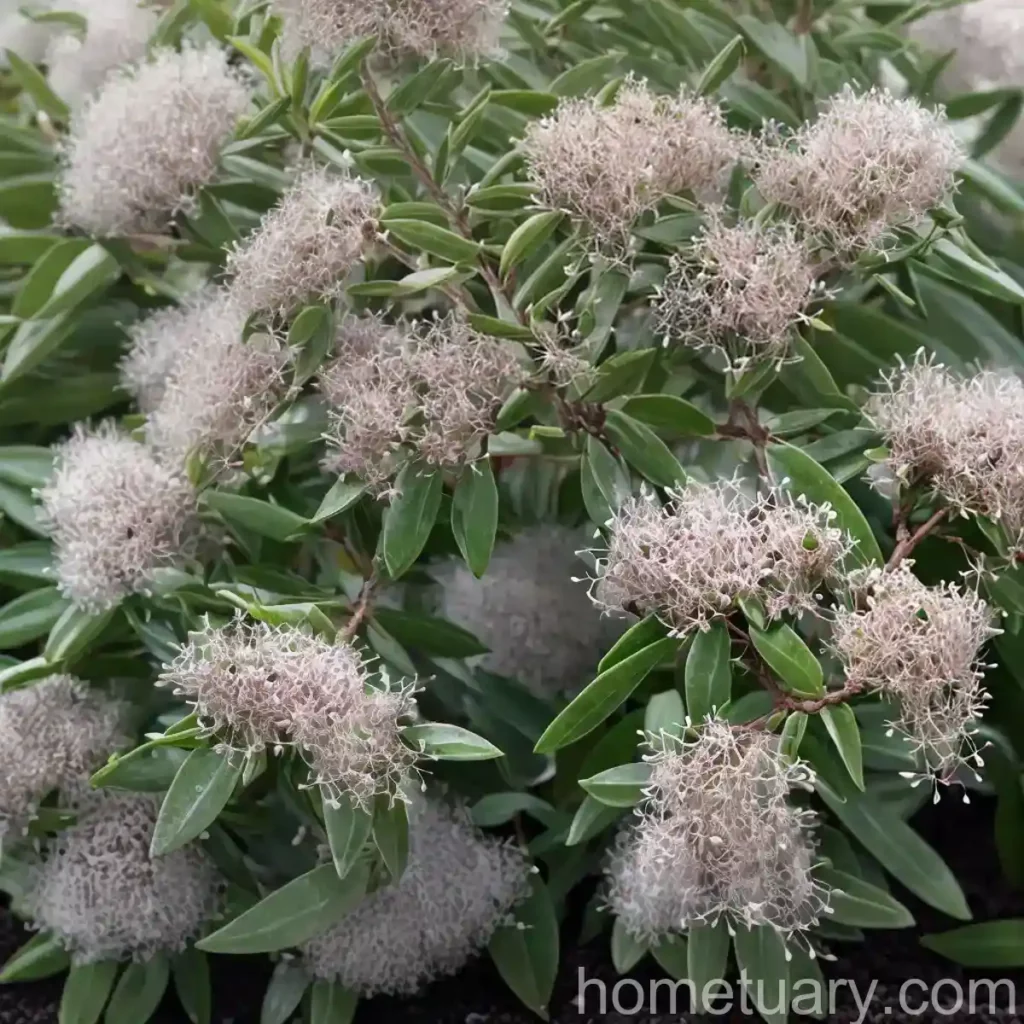All about Myrtle (Myrtus communis ‘Compacta’)
Myrtle (Myrtus communis ‘Compacta’) is a versatile and delightful plant that has been cherished for centuries due to its aromatic leaves, charming flowers, and various cultural and medicinal uses. This compact evergreen shrub is a popular choice for gardens, containers, and landscapes due to its adaptability and low maintenance requirements. In this comprehensive guide, we will delve into the culture, care, uses, and interesting facts about Myrtle, as well as practical tips for propagation, pruning, and dealing with common diseases and pests.
What is Myrtle (Myrtus communis ‘Compacta’)?
Myrtus communis ‘Compacta’ is a compact, slow-growing evergreen shrub that belongs to the Myrtaceae family. It is a cultivar of the common myrtle, Myrtus communis, which is native to the Mediterranean region, including Southern Europe, North Africa, and Western Asia. This cultivar is known for its dense, bushy growth habit and aromatic foliage, making it a preferred ornamental plant for gardens and landscapes. The plant is characterized by small, glossy, dark-green leaves and fragrant white flowers that bloom in late spring or early summer.
Key Takeaways – Myrtle (Myrtus communis ‘Compacta’)
Before diving into the specifics of Myrtle’s care and cultivation, let’s explore the key takeaways for this delightful plant:
- Botanical Name: Myrtus communis ‘Compacta’
- Common Names: Compact Myrtle, Dwarf Myrtle
- Plant Type: Evergreen shrub
- Growth Habit: Compact, dense
- Foliage: Small, glossy, dark-green leaves
- Flowers: Fragrant, white flowers in late spring
- Uses: Ornamental, culinary, medicinal
- Native Range: Mediterranean region
- Hardiness Zones: 8-11
- Low Maintenance: Requires minimal care and attention
- Adaptability: Suitable for gardens, landscapes, and containers
- Aromatic Qualities: Leaves and flowers emit a pleasant fragrance
Culture
Understanding the cultural requirements of Myrtus communis ‘Compacta’ is essential for ensuring its optimal growth and health. Let’s delve into the cultural aspects of cultivating this charming evergreen shrub:
Uses
The uses of Myrtus communis ‘Compacta’ are diverse, ranging from ornamental and culinary to medicinal applications. Understanding its various uses can provide valuable insights into the versatility of this plant:
Water
Proper watering is crucial for the health and vitality of Myrtle (Myrtus communis ‘Compacta’). Maintaining the right moisture levels will contribute to its overall well-being and growth. Here are some key considerations for watering this delightful plant:
Sunlight
As with most plants, sunlight plays a crucial role in the growth and development of Myrtus communis ‘Compacta’. Understanding its sunlight requirements is essential for creating an optimal environment for this charming shrub:
Fertilizer
Fertilization is an integral part of plant care, and it plays a significant role in the growth and overall health of Myrtle (Myrtus communis ‘Compacta’). Let’s explore the appropriate fertilizer practices for this evergreen shrub:
Soil
The soil composition and quality directly impact the growth, root development, and overall health of Myrtus communis ‘Compacta’. Understanding the ideal soil conditions for this plant is essential for ensuring its well-being:
Pruning
Proper pruning is essential for maintaining the shape, size, and overall appearance of Myrtus communis ‘Compacta’. Additionally, pruning contributes to the plant’s health and vigor. Here are the key considerations for pruning this delightful shrub:
Propagation
Understanding how to propagate Myrtle (Myrtus communis ‘Compacta’) is valuable for expanding your plant collection or sharing its charm with others. Let’s explore the propagation techniques for this versatile plant:
Container Popularity
Myrtus communis ‘Compacta’ is well-suited for container gardening due to its compact size and adaptability. Here are some key insights into its popularity as a container plant:
Common Diseases
Despite being a resilient plant, Myrtus communis ‘Compacta’ is susceptible to certain diseases. Recognizing and addressing these diseases is crucial for preserving the health and beauty of this charming shrub. Let’s explore common diseases that may affect Myrtle:
Disease Diagnosis
Diagnosing diseases in Myrtus communis ‘Compacta’ is essential for implementing the appropriate treatments and preventive measures. Here’s a guide to diagnosing potential diseases that may affect this delightful plant:
Common Pests
Dealing with pests is a common concern in plant care, and Myrtle (Myrtus communis ‘Compacta’) is not exempt from potential pest issues. Understanding the common pests and implementing effective pest management strategies is essential for maintaining the health and vitality of this evergreen shrub:
Botanist’s Tips
As a plant scientist and enthusiast, I’ve gathered some valuable tips and insights into the cultivation and care of Myrtus communis ‘Compacta’. These botanist’s tips can assist you in nurturing this delightful plant with confidence:
Fun Facts
Discovering the intriguing and lesser-known facts about Myrtle (Myrtus communis ‘Compacta’) adds to the appreciation and fascination for this versatile plant. Let’s explore some fun facts about Myrtle that highlight its charm and cultural significance:
Links to External Resources
For additional information and insights into Myrtus communis ‘Compacta’ and related topics, I recommend exploring the following external resources:
- Royal Horticultural Society – Myrtus communis ‘Compacta’
- American Society for the Prevention of Cruelty to Animals – Myrtus communis
- Missouri Botanical Garden – Myrtus communis
- University of Florida IFAS Extension – Myrtus communis
- Permaculture Research Institute – Myrtle: Queen of the Mediterranean
By harnessing the insights and guidelines provided in this comprehensive guide, you can cultivate, nurture, and appreciate Myrtle (Myrtus communis ‘Compacta’) with confidence, while unlocking its full potential in your garden, landscape, or container setting.















